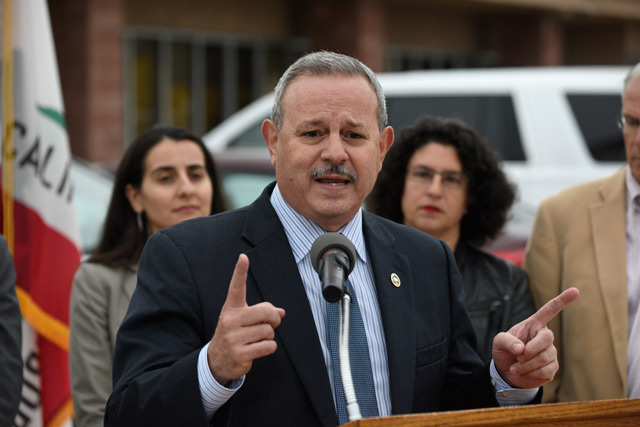State Heavyweights Flex on Santa Barbara Water
Play Nice Or Suffer the Consequences, They Warn Local Leaders

Two of the highest ranking officials in state government descended on Santa Barbara County this Monday to assure local politicians and water agency directors they recognize the severity of the county’s drought-inflicted water shortage and that help — in the form of grants, bonds, and low-interest loans — was available for water infrastructure solutions. But they made it pointedly clear that unless Santa Barbara politicians got far more involved than they have been and that managers from multiple water agencies cooperated with one another far better than they currently do, Santa Barbara’s chance of successfully competing for limited state funds hovered somewhere between zilch and nil.
For more than an hour, state water experts — led by Mark Ghilarducci, director of the Governor’s Office of Emergency Services, and Bill Croyle, deputy director of California’s Department of Water Resources’ emergency preparedness — met with representatives from every water agency in the county and elected officials, including County Supervisor Salud Carbajal, Santa Barbara Mayor Helene Schneider, and Councilmember Bendy White, for a behind-closed-doors exchange of information and opinions that was described by one participant as “frank, honest, but positive.”
That such a high-octane gathering took place reflects interventions made by State Senator Hannah Beth-Jackson, who met with Ghilarducci just last week. Local water agencies — the City of Santa Barbara in particular — had recently expressed frustration at state red tape preventing them from even applying for state water bonds that have $100 million set aside for desalination projects. By Monday’s gathering, that tune had decidedly changed. Schneider highlighted the successful multi-agency collaboration that secured $5.5 million state grants to move the emergency pumping barge located on Lake Cachuma.
State officials said they expected local water interests to meet weekly to identify three short- and long-terms solutions that enjoyed regional buy-in. It appears much focus will be on expanding the capacity of the city’s desalination plant and running it far more regionally than currently planned. To expand production from 3,125 acre-feet a day to its maximum licensed capacity of 10,000 will require massive infrastructure investments. To operate the facility regionally would require the installation of new pipelines running from the city’s waterfront to the Cachuma delivery pipes running along Highway 192. It remains an open question how much money such a facility could attract from state agencies, but based on Monday’s event, the answer seems clearly some.


